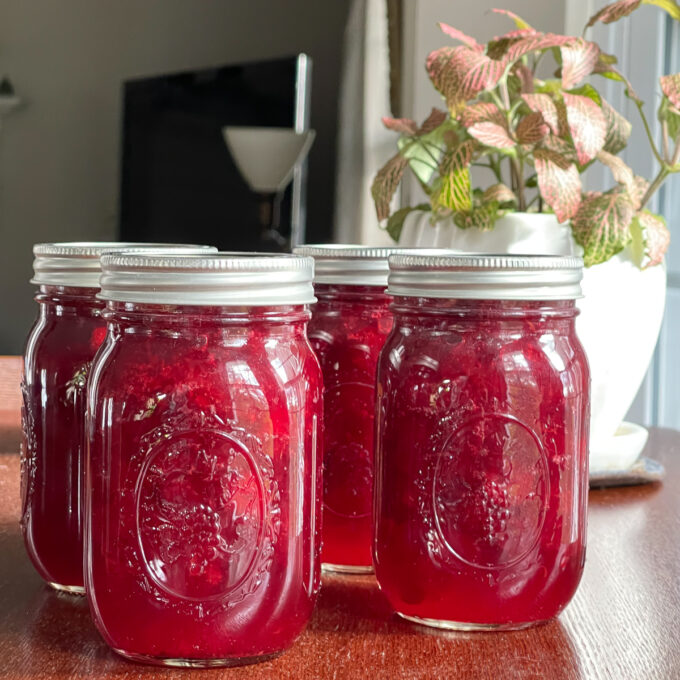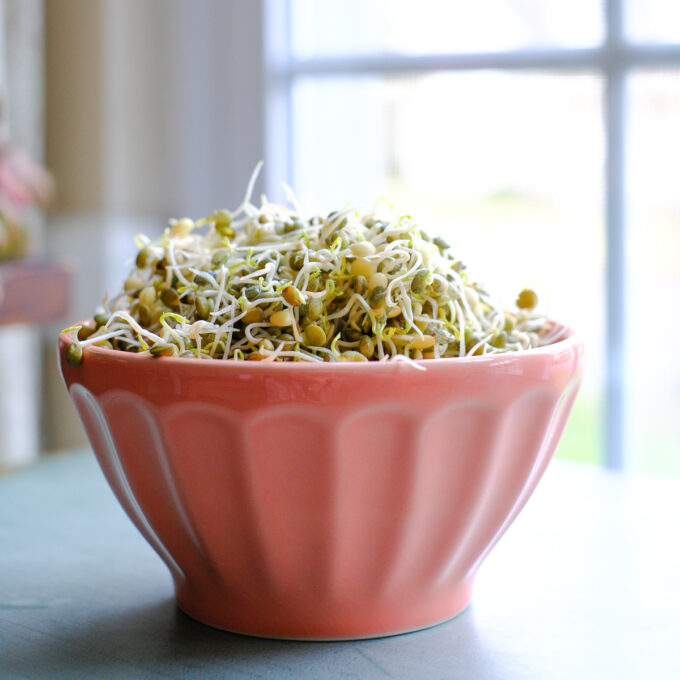One bite of these tangy, fizzy, and utterly delicious fermented cherry tomatoes, will have you starting another jar immediately.

If you have never tried lacto-fermented cherry tomatoes, you are in for a treat! Fermenting cherry tomatoes turns them into something amazing. They are fizzy and a little salty, tomato-y flavor, but more.
What is lacto fermentation?
Basically lacto fermentation is the process by which sugars are broken down in foods and in turn it produces lacto acids.
Food is placed in a brine salty enough that harmful bacteria can't thrive, but healthy bacteria can. It is allowed to ferment for days to weeks, depending on the food. Once it reaches the desired flavor, it is refrigerated, where it will keep for months - but it won't last that long!
You might be familiar with a well-known lacto-fermented food - sauerkraut.
Ingredients for fermented cherry tomatoes.
- Cherry tomatoes - a variety of colors makes it a little more interesting to look at, but not necessary. They should have no blemishes of spots.
- Salt - use a kosher salt or a pickling salt. Regular table salt has additives that you don't want.
- Water - filtered water, tap water has chlorine and other ingredients that may hamper fermentation.
- Basil and garlic - for flavor
- Optional: black peppercorns, coriander seeds, mustard seeds. You can flavor your tomatoes with a lot of different options, or you can omit them altogether.
Step-by-step instructions.
Wash and dry the tomatoes and basil. It's best to have them dry, especially if you washed them in tap water.
Wash and dry the jar and lid that you plan to use.
I only use a scale when making fermented vegetables. It is the best way to get an accurate amount of salt. It also allows you to ferment no matter how many vegetables you have, making smaller or larger batches easy to scale. A typical brine is between 1.5% to 3.0% salt. I make all of mine with 2.5%. I will link to a scale in the recipe card.
Place the jar on the scale and zero it out.
Add the tomatoes to the jar leaving at least a couple of inches of headroom.
Add any flavoring ingredients that you are using.
Fill the jar with filtered water, leaving at least an inch of headroom for the glass weight. NOTE - if you do not have a glass weight you can use a clean plastic bag filled with water, or a cabbage leaf. You need something to keep the vegetables submerged.
Record the weight in grams. Since you zeroed out the weight of the jar, you have the weight of the water plus the vegetables. Multiply the weight by .025, that will tell you how many grams of salt you need to add.
Pour off the water into a bowl or large measuring cup. Place a small bowl on the scale, zero it out, and weigh out the amount of salt you need. Add that salt to the water and stir to dissolve.
Pour the salt brine back over the tomatoes, top with a glass weight (or whatever you are using) to make sure the tomatoes stay submerged. If you have a fermentation lid, that works great, if not, you just need to remember to open the lid a bit (over a sink) every day or so to let the gases escape.
Place the jar on a plate and set aside out of direct sunlight.
After 6-8 days, check the flavor of your tomatoes. You should have seen some bubbling and the tomatoes should be pleasantly fizzy. Store in the fridge to slow down the fermentation.

Once you taste these fermented tomatoes, you'll want to ferment everything! Using my formula for weighing to calculate the salt, you can ferment no matter how much of a vegetable you have.
This is a great way to preserve tomatoes and extend your enjoyment! They will keep in the fridge for several months!
Other fermented recipes to try.



Recipe.
**As an Amazon affiliate I earn from qualifying purchases.
Fermenting Cherry Tomatoes
Ingredients
- 2 cups cherry tomatoes or however much you have!
- kosher salt or pickling salt, amount to be determined
- water preferably filtered water
- 2 stems basil optional
- 4 cloves garlic optional
- ¼ teaspoon black peppercorns optional
- ¼ teaspoon coriander seeds optional
- ¼ teaspoon mustard seeds optional
Instructions
- Wash and dry all equipment. Wash off and dry tomatoes and basil if using.
- Place empty jar on scale and zero it out. (You will be calculating the weight of the tomatoes plus the water.)
- Place the tomatoes, basil, garlic, and any spices in the jar. Leave a couple of inches of headroom. Add water to the jar, leaving enough headroom for a glass weight, or whatever you will be using to keep the vegetables submerged.
- Record the weight in grams and multiply it by .025. The result is the amount of salt you will need.
- Pour off the water into a bowl or measuring cup. Place a small bowl on the scale and zero it out. Add the amount of salt you calculated earlier. Add that salt to the water and stir to dissolve.
- Pour the salted water (brine) back over the tomatoes in the jar. Place a weight, a cabbage leaf, or whatever you are using to keep the vegetables submerged. Place a lid on the jar, either a fermenting lid or a regular lid. If using a regular lid, you'll need to open it a bit every day or so to let gases escape.
- Place the jar on a plate, keep out of direct sunlight. Taste your tomatoes in 6-8 days. When they are to your liking, you can replace the fermenting lid with a regular lid and store in the fridge.








Leave a Reply